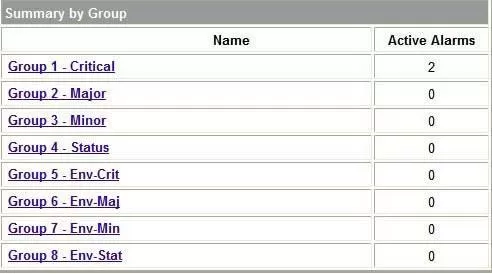Check out our White Paper Series!
A complete library of helpful advice and survival guides for every aspect of system monitoring and control.
1-800-693-0351
Have a specific question? Ask our team of expert engineers and get a specific answer!
Sign up for the next DPS Factory Training!

Whether you're new to our equipment or you've used it for years, DPS factory training is the best way to get more from your monitoring.
Reserve Your Seat TodayYour NetGuardian is about to be transformed by one of the most significant firmware updates ever. The new NetGuardian 4.0 firmware includes next-generation features like support for SNMP v2c and the INFORM command; customizable alarm severity levels; global support for dual SNMP managers; plus many under-the-hood improvements.
The NetGuardian 4.0 release adds more flexibility, intelligence and power to your NetGuardian RTUs, and sets the foundation for all future NetGuardian hardware and software development.

SNMP v2c Support and Robust Message Delivery
The most significant advance in NetGuardian 4.0 is support for SNMP v2c and the SNMP INFORM command, which permits robust delivery of alarm notifications to your SNMP manager.
TRAP notifications, supported in SNMP v1 and later, are considered non-robust because the SNMP manager doesn't send an acknowledgment in response to the TRAP. The device sending the TRAP sends it only once; the sending device has no confirmation that the TRAP has been received; and so there's no guarantee that the alarm information has been successfully sent to the SNMP manager.
INFORM notifications, supported in SNMP v2c, are designed for confirmed delivery. When an SNMP manager receives an INFORM, it sends a confirmation response back to the SNMP agent device that sent the INFORM. If the SNMP agent device doesn't receive a response to its INFORM, it resends the INFORM until the SNMP manager sends the confirmation response.
INFORM notifications are not the best choice for everybody; you're choosing a trade-off of reliable delivery at the cost of heavier network traffic. A TRAP is only sent once, which makes very little demand on network resources. The INFORM requires a response packet to be sent and messages may be sent several times, which increases reliability but makes more demands on the network.
NetGuardian 4.0 lets you choose between three different SNMP formats: SNMP v1-format TRAP, SNMP v2c-format TRAP and SNMP v2c-format INFORM. You can select whether you prefer TRAP or INFORM format, or you can select a SNMP v1-format TRAP for compatibility with legacy SNMP managers that may not support SNMP v2c. NetGuardian 4.0 is backwards compatible with earlier NetGuardian firmware, so you may operate NetGuardians with 4.0 firmware and NetGuardians with earlier firmware in the same network.

Global Support for Dual SNMP Managers - More Flexible Alarm Reporting
NetGuardian 4.0 supports sending all SNMP TRAP and INFORM notifications to two global SNMP managers. This makes it easier to configure a secondary SNMP manager and frees up your NetGuardian configuration for more notification devices and more flexible alarm reporting.
To use this feature, simply specify two Trap Addresses in the NetGuardian's SNMP configuration. All alarms that are configured to send a TRAP or INFORM will automatically be forwarded to both SNMP managers. It's easy and automatic.
This frees up more of your NetGuardian configuration for more notification devices. You can configure up to eight additional notification devices (more SNMP managers, a T/Mon NOC, text messaging, pager or email). Plus you can configure up to four separate notifications for each alarm.
For example, you can easily send an alarm to your primary SNMP manager at the NOC; to a secondary backup SNMP manager at another location; to the pager of the on-call technician; and the email in-box of the technician's supervisor.

Alarm Point Grouping Provide Severity Levels, Custom Virtual Alarms and More
Another big new feature in NetGuardian 4.0 is customized Alarm Point Grouping. Each NetGuardian alarm point can be assigned to one of eight groups, which are identified with a user-defined label. This adds an amazing amount of flexibility to how you view and use your alarm data at the RTU level. Some of the ways you can use Alarm Point Grouping include:

Filter or Reset the NetGuardian Event Log
The NetGuardian Event Log has been enhanced to support new NetGuardian 4.0 features:
NetGuardian 4.0 also provides a new command to resynchronize all alarms. This command clears all alarms, so that a new notification is sent for all standing alarms. You can easily test alarm connections during turnup without rebooting the NetGuardian unit.